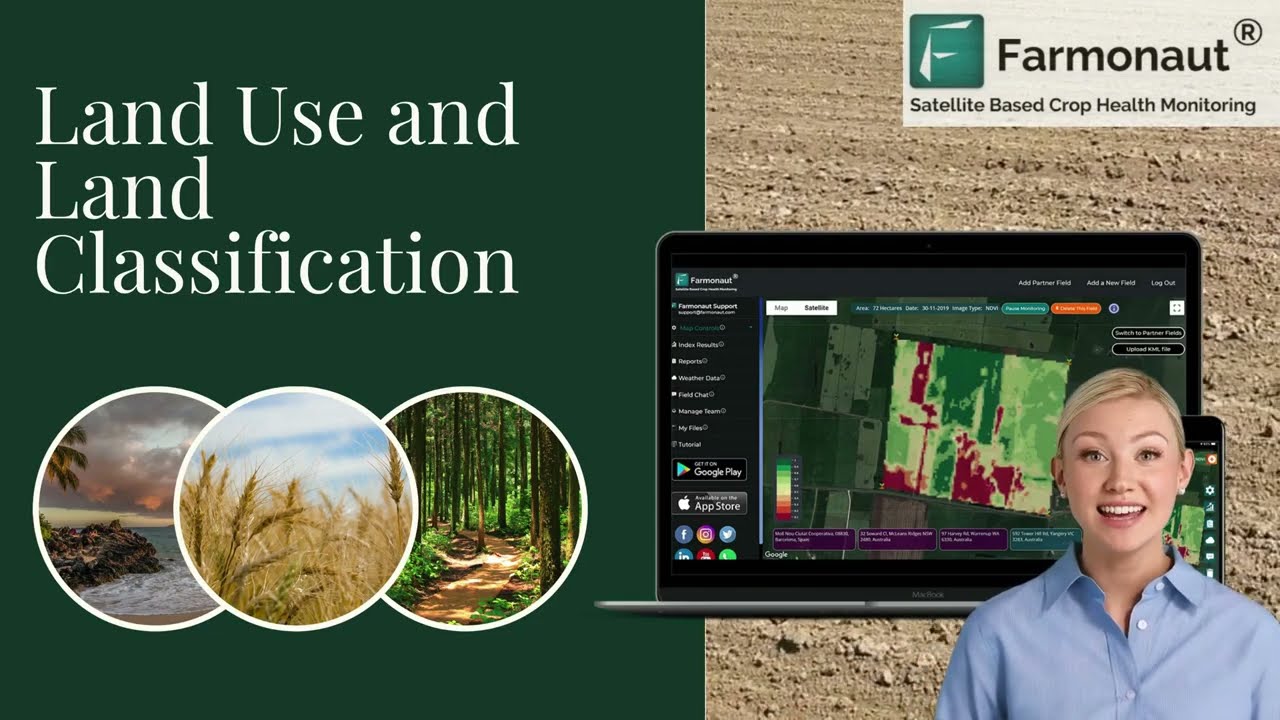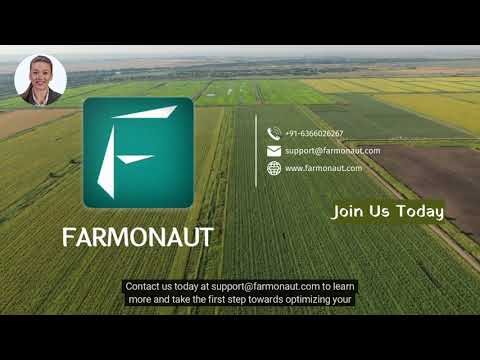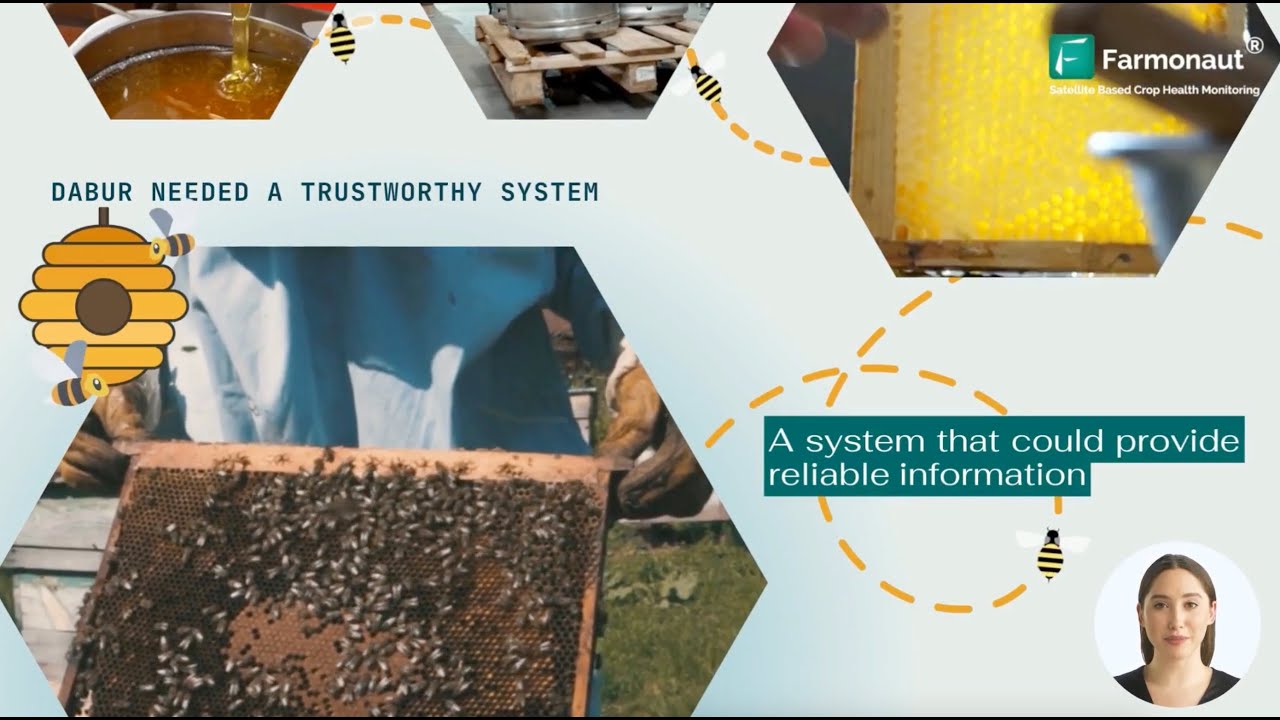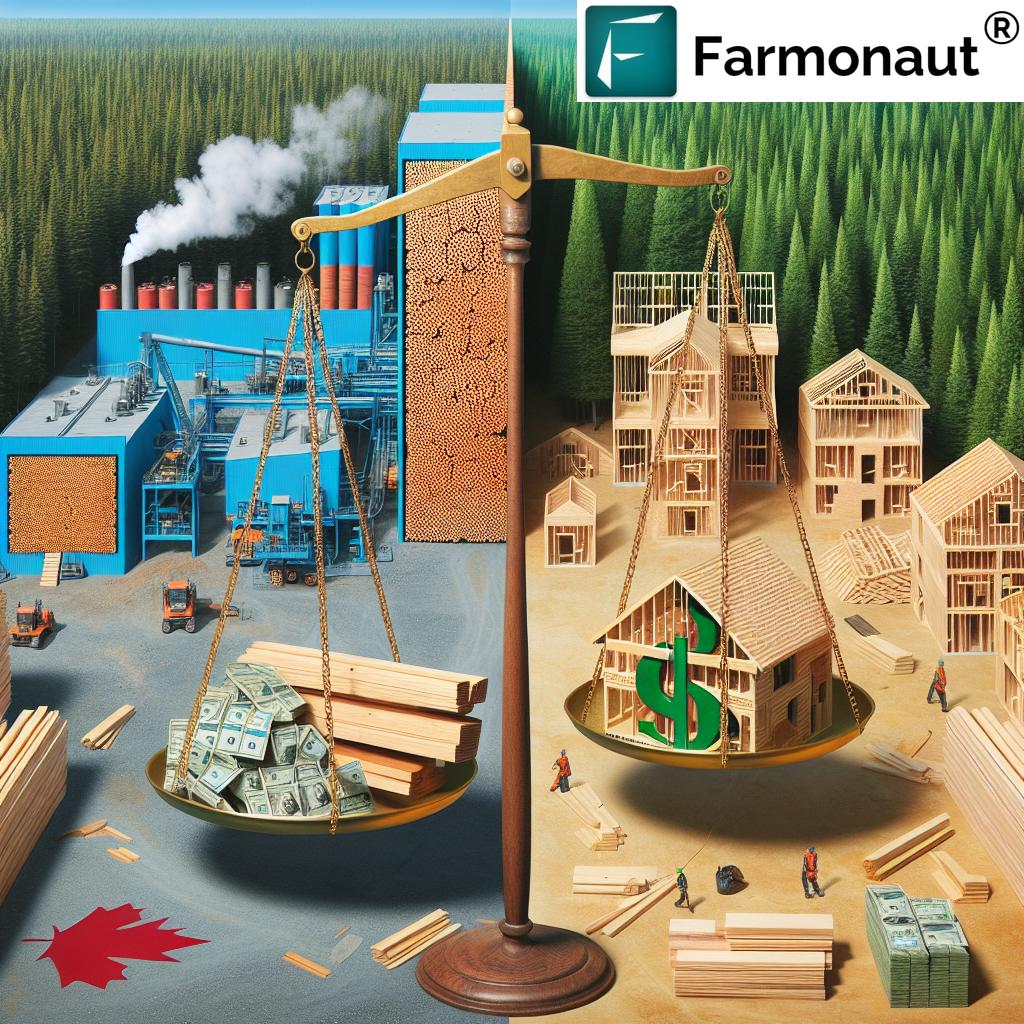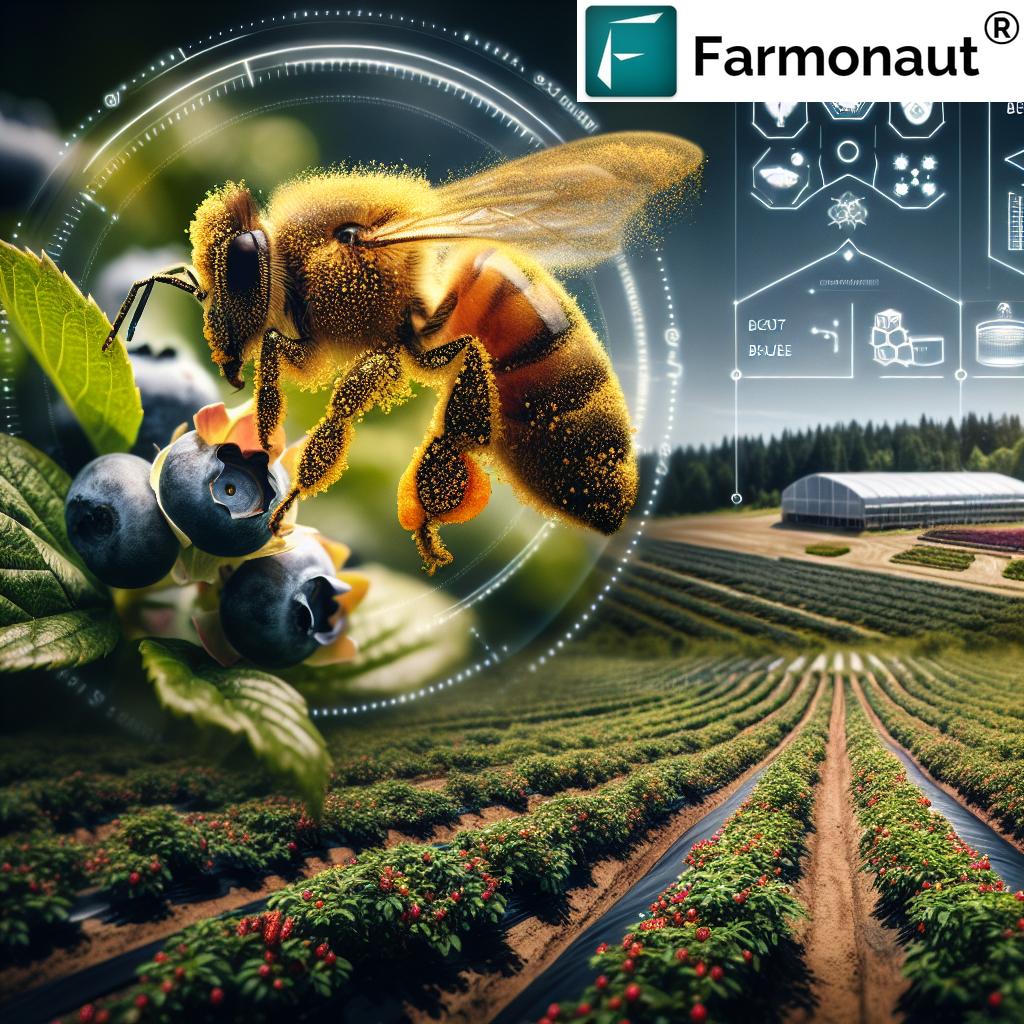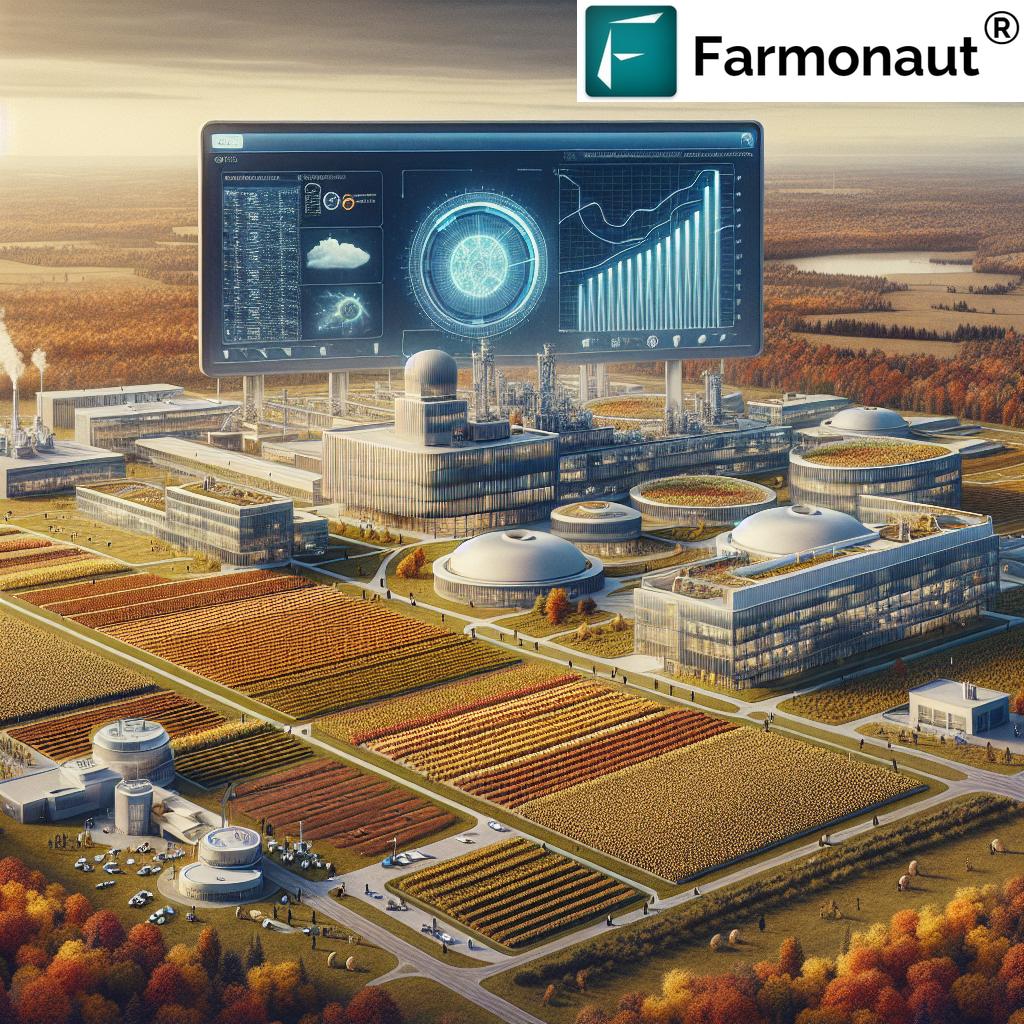Table of Contents
- Introduction: Charlottetown Affordable Housing and Farmland at a Crossroads
- Trivia: PEI Farmland Threats
- Affordable Housing Charlottetown: Current Context and Government Process
- Residential Sprawl Concerns: Understanding the Challenges
- 5 Farmland Protection Insights for Municipality Housing Projects
- Comparative Impact Table: Strategies for Balancing Agriculture and Development
- Digital Solutions: Farmonaut’s Role in Protecting Farmland in Prince Edward Island
- Access Farmonaut’s Advanced Farm Management Tools
- FAQ: Land Use Issues, Housing, and Farmland in Charlottetown
- Conclusion
Charlottetown Affordable Housing: 5 Farmland Protection Insights
“Over 70% of Prince Edward Island’s land is farmland, yet residential sprawl threatens its long-term preservation.”
In recent years, affordable housing Charlottetown has become an increasingly urgent topic in Prince Edward Island (PEI). With the province’s population growing and development pressures mounting, the delicate balance between building new homes and protecting farmland is facing unprecedented scrutiny. The recent pause in the tiny home development project on Sleepy Hollow Road, just outside Charlottetown in the rural municipality of Miltonvale Park, has spotlighted the tension between meeting housing needs and safeguarding agricultural land for future generations.
As residents, policymakers, and rural communities in District 15 and beyond raise concerns about residential sprawl, our collective focus turns to the government’s processes, land use policies, and the need for effective community input in housing projects. The issues here run deeper than just permit approvals or building more units: they touch the core of rural life, food security, and the island’s unique character.
Affordable Housing Charlottetown: Current Context and Government Process
Charlottetown affordable housing has reached a critical juncture, driven by rising demand, limited availability, and rapid changes in land use. The collaboration between the PEI government and the Construction Association aims to create upwards of 200 tiny homes on 65 acres near Sleepy Hollow Road—a move targeted at aiding Islanders on the social housing registry and giving building experience to Holland College students and apprentices.
Despite good intentions, the project faced criticism for insufficient communication and community engagement. Opposition members in the legislature underscored the lack of transparency and accused the government of failing to consult local residents before deciding on land use. Ministerial responses emphasized the following of protocol and recent moves to pause and reconsider the approach after receiving feedback. With both parties citing due process and the role of community voice, the case exemplifies how municipality housing projects can spark debate on balancing development and protection.
Residential Sprawl Concerns: Understanding the Challenges
As the province strives to address the housing crisis, new sprawling developments often come at the expense of valuable agricultural land. Residential sprawl concerns include:
- Loss of productive farmland: Paving over land previously used for farming diminishes future food security and agricultural economics.
- Increased infrastructure pressures: Extending roads and services can strain municipal budgets and increase long-term maintenance costs.
- Community fragmentation: Large, dispersed housing projects can disrupt rural community fabric and erode sense of place.
- Sustainability risks: Sprawl increases carbon footprints, vehicle reliance, and resource use, impacting PEI’s climate commitments.
The city and municipality must weigh these risks when issuing permits and shaping housing policies. Given the district‘s unique rural context, decisions made today will resonate for decades.
“Charlottetown’s affordable housing demand has surged by 25% in the past five years, intensifying rural development pressures.”
5 Farmland Protection Insights for Municipality Housing Projects
To ensure that rural development and housing growth in and around Charlottetown do not lead to irrevocable loss of agricultural land, here are five critical insights and strategic considerations:
-
Inclusionary Zoning for Affordable Housing Developments
Our communities can require new residential projects—like the tiny home development—to include a percentage of affordable units while also implementing policies that shield nearby farmland from future conversion. Inclusionary zoning is a market-driven solution that integrates housing needs with land protection. By leveraging zoning tools, we can ensure that both residents and agricultural interests are respected.
- Enables mixed-income developments that benefit diverse populations
- Provides legal underpinning for balancing farmland protection and housing
-
Urban Growth Boundaries to Prevent Sprawling Expansion
Instituting urban growth boundaries means designating clear lines where development can occur and where agricultural land is preserved. This makes sprawl less likely, creates incentive for higher-density housing, and ensures that critical rural resources remain intact. The government can tailor these boundaries to specific needs of areas like Sleepy Hollow Road and Miltonvale Park.
- Protects farmland beyond designated urban areas
- Focuses investment on infrastructure upgrades within the growth zone
-
Land Banking and Conservation Easements
The province can use land banking—acquiring land for future housing, then reselling or transferring it for agriculture if unneeded—to decrease immediate pressure on rural parcels. Conservation easements, meanwhile, can ensure that working farmland is protected in perpetuity, even if ownership changes.
- Reduces speculative buying that drives up farmland costs
- Supports generational farming and local food systems
-
Community Input in Housing Projects: Public Process Reforms
The feedback over the Sleepy Hollow Road housing plan shows why community input in housing projects is essential. Our government should codify robust community engagement, open forums, and transparent communication when making land use decisions. This approach improves trust and ensures local voices shape rural housing developments.
- Reduces conflict over land conversion
- Enables residents to suggest alternatives that might preserve more farmland
-
Smart Densification and Infrastructure Planning
Focusing on higher-density, mixed-use developments along existing roads such as Sleepy Hollow Road can yield more housing units on less land, minimizing sprawl. Linking housing to infrastructure upgrades—such as safety improvements and road maintenance—ensures new developments do not degrade rural quality of life.
- Concentrates public spending for greater impact
- Preserves contiguous landscapes vital for PEI’s agricultural market
Comparative Impact Table: Strategies for Balancing Agriculture and Development
| Strategy/Policy | Est. Housing Units Added | Est. Farmland Preserved (acres) | Projected Timeline (years) | Community Impact Score (1-10) | Relevance to Charlottetown |
|---|---|---|---|---|---|
| Inclusionary Zoning | 100–300 | ~60 | 3–6 | 8 | High (directly aligns development with protection) |
| Urban Growth Boundaries | 80–200 | 100+ | 5–10 | 9 | Medium (requires city-provincial coordination) |
| Land Banking/Easements | Varies | 75–150 | 4–9 | 7 | Medium (supports long-term farming viability) |
| Community Input/Public Reforms | 50–120 | 50+ | 2–4 | 10 | High (addressing public and local concerns) |
| Smart Densification & Infrastructure | 120–350 | ~65 | 3–7 | 8 | High (integrated with current municipal plans) |
Digital Solutions: Farmonaut’s Role in Protecting Farmland in Prince Edward Island
As debates over Charlottetown’s affordable housing, rural expansion, and protecting farmland in Prince Edward Island continue, advanced digital tools are becoming essential. Farmonaut, a leader in agricultural technology, delivers powerful solutions for monitoring, managing, and securing agricultural resources using satellite imagery, artificial intelligence, and blockchain.
Satellite-Based Farm Management for Land Use Issues PEI
Farmonaut’s services give all stakeholders— farmers, government, and organizations— critical insights into land use issues PEI such as encroachment of development onto farmland, soil health fluctuations, and agricultural productivity. Through their Large-scale Farm Management Platform, users monitor crop health, resource allocations, and the impacts of nearby housing development or environmental change.
- Leverage real-time crop health analytics (NDVI, soil moisture, and pest patterns)
- Support compliance with city and provincial agricultural mandates
- Proactively defend farmland boundaries amidst development pressures
Precision and Sustainability: From Carbon Tracking to Resource Management
PEI’s push toward balanced rural development also hinges on sustainability. Farmonaut offers a dedicated Carbon Footprinting Tool that allows the province, municipalities, and agribusinesses to track and reduce emissions throughout operations—vital as the city and province seek to offset the impacts of housing projects on the rural landscape.
- Quantify environmental impacts of development vs. agricultural preservation
- Access actionable eco-advisory reports for agriculture or housing policies
Their Fleet & Resource Management System helps the government and farm businesses optimize machinery and transport for both large and small operations across PEI—supporting efficient, safe, and cost-effective land stewardship.
Traceability and Trust in Agricultural Land Markets
As the market for agricultural land in PEI heats up due to housing pressures, transparency in ownership, management, and output becomes vital. Farmonaut’s Blockchain-Based Traceability Solution enables public verification of land use—from active farms to properties undergoing development—helping to build trust between residents, authorities, and buyers.
- Enhances communication and authenticity within the rural property market
- Assists financial institutions with secure documentation for crop loans and insurance
- Supports responsible decision-making backed by data
For anyone managing agricultural land in Charlottetown or across PEI, adopting such technology can mean the ability to protect vital assets with greater precision and transparency.
Ecosystem Integration and Platform Accessibility
Farmonaut’s tools are accessible on Android, iOS, web/browser App, and API, offering flexibility for everything from smallholder farmers to governmental rural housing planners. By supporting transparent, data-driven management, these digital resources empower communities in both agriculture and development—crucial for ongoing debates around housing, public land use, and protecting the PEI landscape.
Explore detailed weather and satellite crop insights, or integrate Farmonaut’s data into your systems with their Open Satellite API and comprehensive Developer Documentation.
The underlying goal? Advance affordable, precision-driven agriculture and decision-making so that the island’s dual challenges—housing and food security—are met for years to come.
FAQ: Land Use Issues, Housing, and Farmland in Charlottetown
What is the main issue with the Sleepy Hollow Road housing project?
The primary issue is the conversion of 65 acres of previously active farmland into residential space near Charlottetown. Many local residents and members of the legislature argue that the government did not adequately consult the community, raising transparency and land use concerns. Opponents are especially worried about residential sprawl and the erosion of agricultural capacity on PEI.
Why is protecting farmland in Prince Edward Island so important?
With over 70% of PEI’s land dedicated to farming, preserving this resource is crucial for food security, economic resilience, and the island’s cultural heritage. Farmland loss to housing development risks long-term consequences, including increased food imports and loss of rural character.
How can community input improve municipality housing projects?
Meaningful community input in housing projects ensures that decisions align with local needs, values, and environmental priorities. Transparent processes build trust, reduce conflicts, and allow for alternative solutions—such as densification or land swaps—that protect farmland while delivering much-needed homes.
What are the roles of technology in balancing agriculture and development?
Technology—such as Farmonaut’s satellite-based crop monitoring and blockchain traceability—enables data-driven decision-making. These systems help identify threats, optimize use of land and water, ensure compliance with planning regulations, and build trust within the changing agricultural market.
Are there sustainable ways to increase affordable housing without causing urban sprawl?
Yes. Policies such as inclusionary zoning, urban growth boundaries, and smart densification (building higher-density housing instead of horizontal sprawl) enable more homes to be added while minimizing the loss of valuable agricultural land. These strategies require coordinated effort between local governments, developers, and communities.
Conclusion
As Charlottetown and broader Prince Edward Island navigate the intersection of affordable housing and rural preservation, the choices we make now will shape our communities for decades. By understanding and implementing farmland protection insights—backed by advanced technologies like those from Farmonaut—we can thoughtfully expand housing while defending the agricultural backbone of PEI.
For residents, policymakers, and all interested parties, adopting a balanced approach where open communication, innovative planning, and digital resource management intersect is key to thriving, connected island communities. The future of PEI’s farmland, food systems, and affordable housing depends on it.
Explore Farmonaut’s solutions for sustainable farming and responsible rural development via their web and app platforms. For further insights and integration options, refer to their developer resources.




